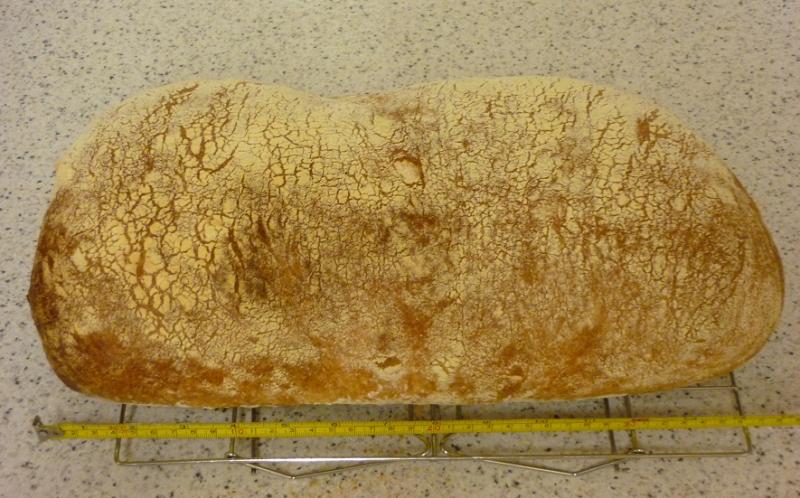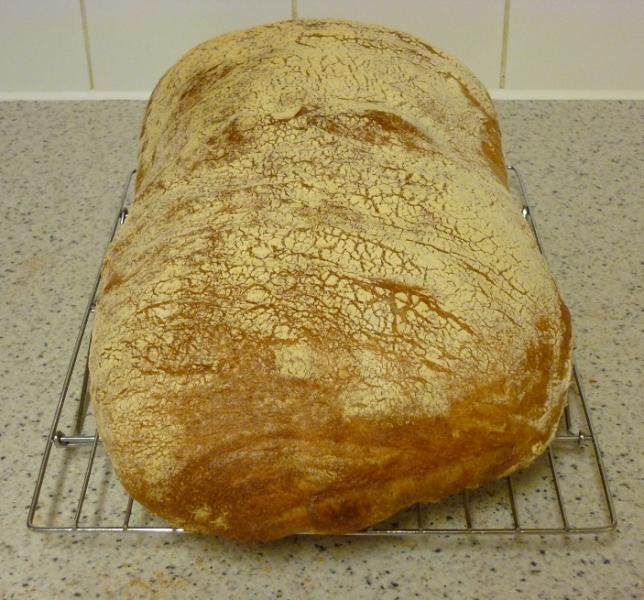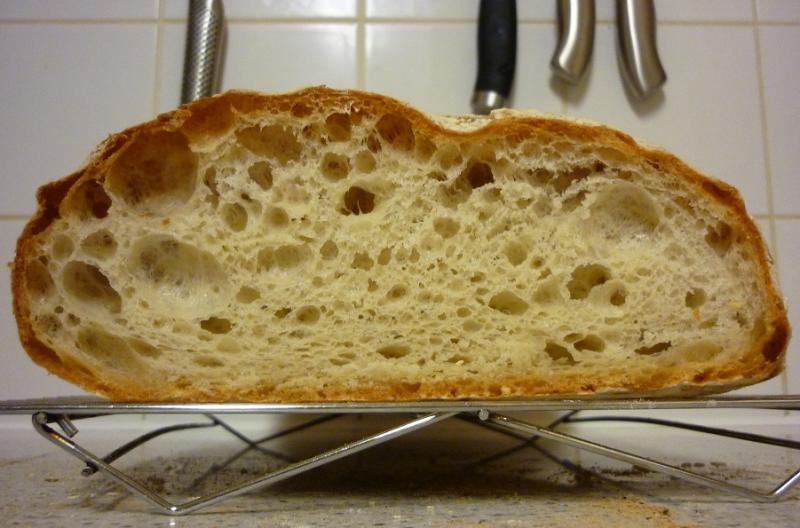I made an enormous ciabatta weighing nearly 1 kilo. I used an 18hr-fermented biga starter and a combination of medium and weak flours. This thing was massive!
Biga:
400g '00' flour from Shipton Mill
160g cold water
1.3g Instant yeast
Final dough:
Fermented biga
320g cold water
200g plain flour (9.4% protein)
24g Extra virgin olive oil
12g Non-diastatic malt powder
12g Salt
2g diastatic malt powder
olive oil for S&f.
Method:
To make the biga, first weigh all the ingredients. Put flour and yeast in the mixing bowl and turn on the mixer adding water gradually to form breadcrumbs and let run until you get a dry dough. Roll out the dough and fold up. Cover and leave overnight at cool room temperature for 18hrs.
Next day weigh all ingredients and cut the biga into pieces. Mix biga and 150g of water until combined. Then add flour, malts, salt and mix adding the rest of the water in stages. Once the dough begins to clean the mixing bowl add the olive oil and finish the mix to achieve a satin-smooth, slightly sticky dough.
Place dough in a well oiled flat and wide container. Cover and rest. Stretch and fold the dough at 20 minute intervals until the dough almost doubles in size. Rest for 20 minutes before shaping business letter style. Roll shaped dough in flour, give it a final dust of flour and leave to proof until doubled in size. Stone-bake with steam.
I had to shape and proof the dough very carefully being so huge already and not having a very big oven, stone or proofing tray/peel.
Baked ciabatta dimensions: 15"x9"x4.5".


Crumb - open and very, very light.


Probably one of the best ciabatta's I ever made. Subtle and moreish in flavour. Perfectly chewy and shreadable in texture.